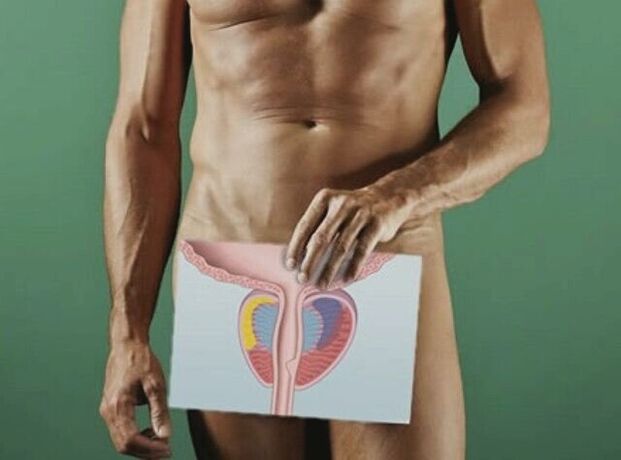
The term "prostatitis (microbiological code 10-41)" refers to an inflammatory process that occurs in the prostate tissue, causing pain, difficulty urinating, frequent toileting, and decreased libido. According to various statistics, the disease mainly affects men of childbearing age, that is, between 25 and 50 years old. According to the characteristics of the symptom complex and the degree of damage to the glands, two forms of prostatitis are distinguished-acute and chronic.
According to the MCB code, the chronic form of prostatitis is assigned a value of 41. 1, and for the acute form, the code 41. 0 is used. The initial diagnosis is made through visual examination and medical history research of the patient. For confirmation, additional techniques were used: ultrasound and laboratory methods.
General characteristics and classification
One-third of the powerful half of humans know what prostatitis is, and it occurs in various forms, because this disease caused by inflammation of the prostate is one of the most common diseases in the male genital area. The disease is manifested by characteristic symptoms: pain, burning sensation, increased urination, decreased sexual activity, and frequent toileting.
Male prostatitis is the result of infective factors penetrating into the tissues of the reproductive organs or systemic circulation to make the prostate ineffective. Even causes such as the common cold or bronchitis can trigger the inflammatory process. In most cases, this occurs in the context of factors that are conducive to the spread of infection, of which the first is called weakened immunity.
In order to obtain the average index, there is a statistical code of prostatitis mkb 10, which allows you to objectively assess the incidence of half of the male population. The code for chronic prostatitis mkb 10 is 41. 1, which indicates a disease that lasts six months or more. In addition, the international code ICB 10 xp classification of prostatitis characterizes the disease as difficult to treat.
The distribution of the mkb 10 code for acute prostatitis is slightly different-41. 0. This form of disease is considered a very suitable treatment and is performed in the context of the obvious symptoms of the disease. There is also code 41. 2. The given index is usually used to specify diseases related to the formation of prostate abscess. It is important to know that the diagnosis of chronic prostatitis recommends that men receive treatment at least once every six months and see a specialist regularly.
Predisposing factors
Against the background of the negative effects of predisposing factors, the possibility of male acute and chronic prostatitis has increased significantly. The following reasons may become a catalyst for the inflammatory process affecting the prostate tissue:
- Stasis is characterized by impaired blood flow and occurs in the context of a sedentary lifestyle, low sexual activity, and overweight.
- Systemic hypothermia of the body, for example caused by the particularity of work.
- The injury, regardless of its nature, and the time elapsed since the moment of injury.
- Infectious and viral diseases of the genital area, including sexually transmitted diseases.
- Infectious and inflammatory diseases of other systems and organs, such as bronchitis, purulent tonsillitis, etc.
As another predisposing factor, practical medicine also named digestive problems, manifested as the appearance of systemic constipation. Therefore, inappropriate nutritional methods will also have an indirect impact on the occurrence of prostate inflammation.
important! Eliminating or reducing the influence of negative factors in time is the most reasonable and effective way to prevent male prostatitis.
Clinical picture
Many people may know what various forms of prostatitis are. But not everyone knows that the typical symptoms of this unpleasant disease will change significantly according to the stage and form of the pathology:
- Catarrhea prostatitis. This disease is characterized by pain in the perineum and groin, and often wants to go to the toilet.
- Follicular prostatitis. The pain syndrome becomes more severe, urination is difficult, and the wrong urge to go to the toilet may appear.
- Parenchymal prostatitis. Severe pain syndrome, which is aggravated by urination or defecation behavior, often includes delayed urination, false use of the toilet, elevated body temperature, chills, fatigue, and fatigue.
The course of chronic prostatitis is accompanied by the appearance of almost all of the above symptoms, but the symptoms will become more exhausting. It should be emphasized that in the context of deterioration, it is very rare to acquire chronic forms of the disease. In most cases, this disease develops gradually in men and is affected by the inflammatory process caused by infectious lesions in the prostate tissue. Its main symptoms are:

- Urination syndrome. Against the background of the negative effects of the inflammatory process, the prostate volume increases significantly, resulting in compression of the ureter. This pathology is the main cause of frequent urination, including false, painful sensations.
- Pain syndrome. The prostate itself has no nerve endings. The pain of prostatitis is the result of the spread of the inflammatory process and the damage of nerve fibers near the prostate.
- Sexual dysfunction. Prostate diseases are characterized by the appearance of various venereal diseases. Most men complain of decreased sensation intensity and brightness during sexual intercourse; decreased libido and insufficient erection are possible in the early stages of disease development. For advanced forms of pathology, impotence is characteristic.
You need to know that the development of prostatitis is often accompanied by a disorder of the patient's psychological and emotional background. Men become more irritable, the development of a depressive state, neurasthenia is possible.
Prostatitis is associated with characteristic clinical manifestations, which greatly simplifies timely diagnosis. As the main diagnostic methods, rectal examinations, ultrasound examinations performed manually by experts, and collection of urine and prostate secretions for analysis in the laboratory are called.
Approach
How to treat prostatitis and which method is most suitable for a specific clinical case are completely determined by the attending physician based on the research results, the patient's physiological characteristics, the form of the disease and the degree of development. In most cases, complex treatments are used, including medications, physical therapy methods, folk remedies, and corrective diets.
Treatment of chronic diseases
Chronic prostatitis is a particularly unpleasant disease. There are many problems and difficulties in its treatment. It is almost impossible to completely eradicate the disease. However, the use of effective treatments can achieve long-term and stable relief, while eliminating the main symptoms of the disease and significantly improving the quality of life. The main treatment methods are:
- medical treatement. The selection of drugs is carried out according to a program developed separately by experts, mainly using antibacterial and anti-inflammatory drugs. To eliminate pain in the early stages of treatment, analgesics can be used.
- physiotherapy. In order to stimulate the regeneration process and increase the effectiveness of the active ingredients of the drug, physical therapy methods such as laser therapy, magnetic therapy, and electrophoresis are used together with drugs.
- massage. Regardless of its form and stage, one of the most effective treatments for prostatitis is prostate massage. This procedure helps relieve inflammation, eliminate stagnation and pain. Massage is usually performed by experts in medical institutions, but it can be performed at home by yourself if you have to master the medical technology.
- Immunomodulatory therapy. The treatment of chronic prostatitis includes the mandatory intake of immunomodulatory drugs, which can enhance immunity and the overall tone of the body. In order to eliminate this unpleasant disease, the choice of drugs should be based on the prescription of the attending physician.
In addition, treatment stipulates that patients must reject existing bad habits and correct their diet and daily routines. Adding some products rich in vitamins and useful trace elements to the usual menu will help to keep fit. Moderate physical activity is also an important measure. Physical activity will help avoid stagnation and normalize the flow of blood and lymph.
important! The treatment of prostatitis can only be carried out under the supervision of a specialist. Self-administration of medications or the use of other technologies can lead to negative consequences and deterioration of the patient's condition.
Treatment during exacerbations
Effective treatment of acute prostatitis, under the premise of timely use and adequate treatment, can completely get rid of the disease and normalize the function of the prostate. It is important to know that this form of disease tends to become chronic, so it should be treated when the main symptoms appear.
The treatment of acute prostatitis includes the use of drugs with antibacterial and anti-inflammatory properties. As a supplement, you can use physiotherapy, massage, and a gentle diet. If the disease progresses against the background of the formation of purulent abscesses, it is necessary to use surgical interventions designed to open the capsule, remove the purulent mass and eliminate the focal point of inflammation.
Possible complications
Lack of treatment for acute and chronic prostatitis can lead to complications. Against the background of a worsening form of the inflammatory process, there is a risk of forming a purulent abscess in the prostate tissue, that is, a capsule filled with purulent contents. In this case, the patient's condition deteriorated sharply, delayed urine outflow, severe pain syndrome, high fever, and chills.
The most common complications of chronic prostatitis include the risk of inflammatory processes affecting the bladder and genital tissues. In addition, in the vast majority of cases, the disease is accompanied by sexual dysfunction, leading to decreased libido, various diseases of the reproductive system, and in the most serious case-impotence. It is almost impossible to completely cure such diseases.
In order to cure the disease, prevent complications and the acquisition of chronic or advanced prostatitis, it is important to take the necessary measures in time. It is necessary to consult an expert to determine the cause of the discomfort and to prescribe an appropriate treatment plan when the first symptoms of the disease appear. It was the ignorance of the first wake-up call and the omission of the necessary time that led to the serious complications of the disease.






























